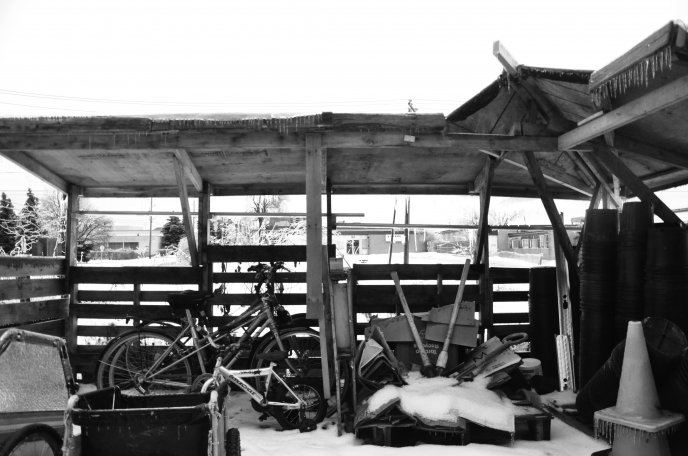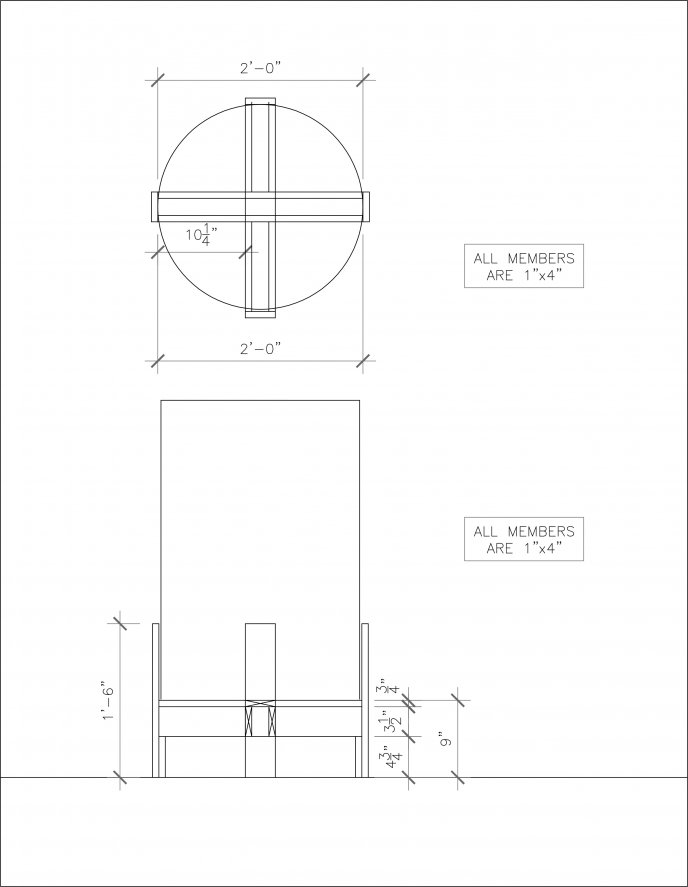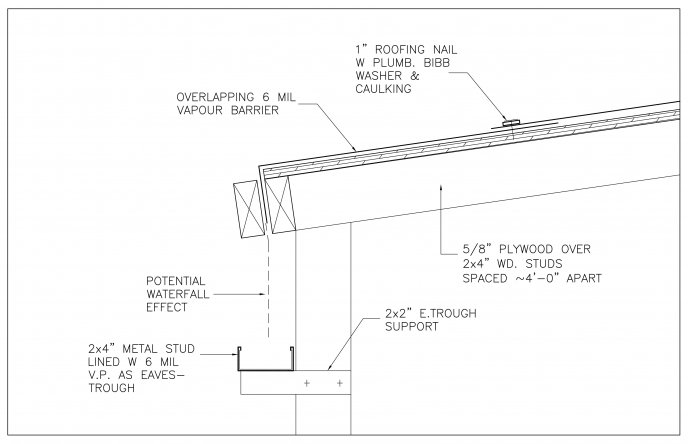In this post of our winter blOAAg series, “Temporary Architecture: Pavilions, Structures and Follies,” we take a look at a lumber structure created for a non- profit organization by Toronto-based Lowell Lo Design Inc. Architect.
From the Architect
Designer: Lowell Lo Design Inc. Architect
Type: Small Structure
Location: Toronto, Ontario
The Storage Shelter was created for PermacultureGTA—a recently established green, social, non-profit organization in Toronto in the autumn of 2014.

PermacultureGTA
Image Credit: Lowell Lo Design Inc. Architect
The structure was located on the front lawn of an industrial building in East York. It was conceived as part of a green, social movements happening in many cities around the world that are referred to under the umbrella term of “permaculture.” This involves designing more permanently and holistically, using principles from nature. This architect sees it as a way of design harking back to Old World cultures before the advent of the Industrial Revolution—a design that does not depend on non-renewable energy power infrastructure.

Skid Storage Drawing
Drawing and Design Credit: Lowell Lo Design Inc. Architect

Skid Storage
Image and Design Credit: Lowell Lo Design Inc. Architect
The Shelter was designed and constructed entirely by volunteers. It was made of used warehouse skids and used lumber, and put together with ceramic screws. The size of the shelter was less than 108 ft2, thus requiring no building permit. There was no foundation such as pier columns or continuous foundation. The structure was anchored by the weight of the warehouse skids and by the rigid overall L-shaped plan configuration of the “skid walls.” Since it was an open walls structure, it also allowed wind to pass through.

Planter Box build
Image and Design Credit: Lowell Lo Design Inc. Architect

Planter Box Drawings
Drawing and Design Credit: Lowell Lo Design Inc. Architect

Seedling Grow-Light Stand
Image and Design Credit: Lowell Lo Design Inc. Architect

Planter Stand
Image and Design Credit: Lowell Lo Design Inc. Architect
The Shelter was used to store tools and materials for the adjacent vegetable garden (located in the front yard of the industrial building), promoting the concept of urban agriculture in an industrial setting. About a dozen sub-irrigated planter boxes (donated) were placed around the structure to display the growing of organic food using novel means. This low-cost prototypical structure could be used for the storage of garden materials or as market stands during farmers’ market events.

Rain Barrel Stand
Image and Design Credit: Lowell Lo Design Inc. Architect

Rain Barrel Stand Drawing
Drawing and Design Credit: Lowell Lo Design Inc. Architect

Skid Storage with Rain Barrel
Image and Design Credit: Lowell Lo Design Inc. Architect
Skid Storage with Rain Barrel
Image and Design Credit: Lowell Lo Design Inc. Architect
The roof shape was conceived to collect roof water to a 24” diameter rain barrel located at the corner of the structure. The extended-corner double roof rafters are “downward pointing,” carrying a metal chain at their ends so water can be drained into the barrel. The eavestroughs were 8’ long 2x4” metal studs lined with a 6-mil vapour barrier; they sloped and cascaded down to the corner of the structure to intersect with the metal chain carried by the extended downward pointing corner rafters and into the barrel.

Skid Storage Roofing Detail
Drawing and Image Credit: Lowell Lo Design Inc. Architect